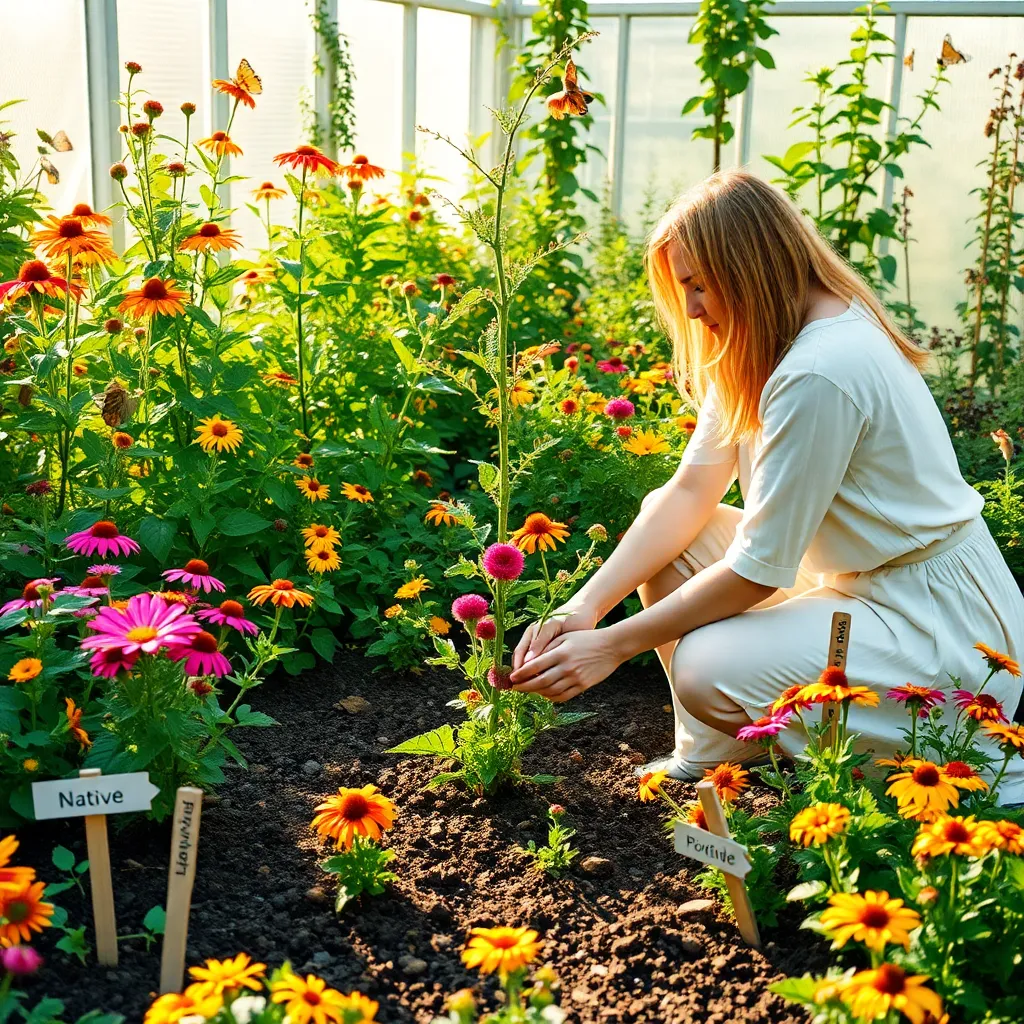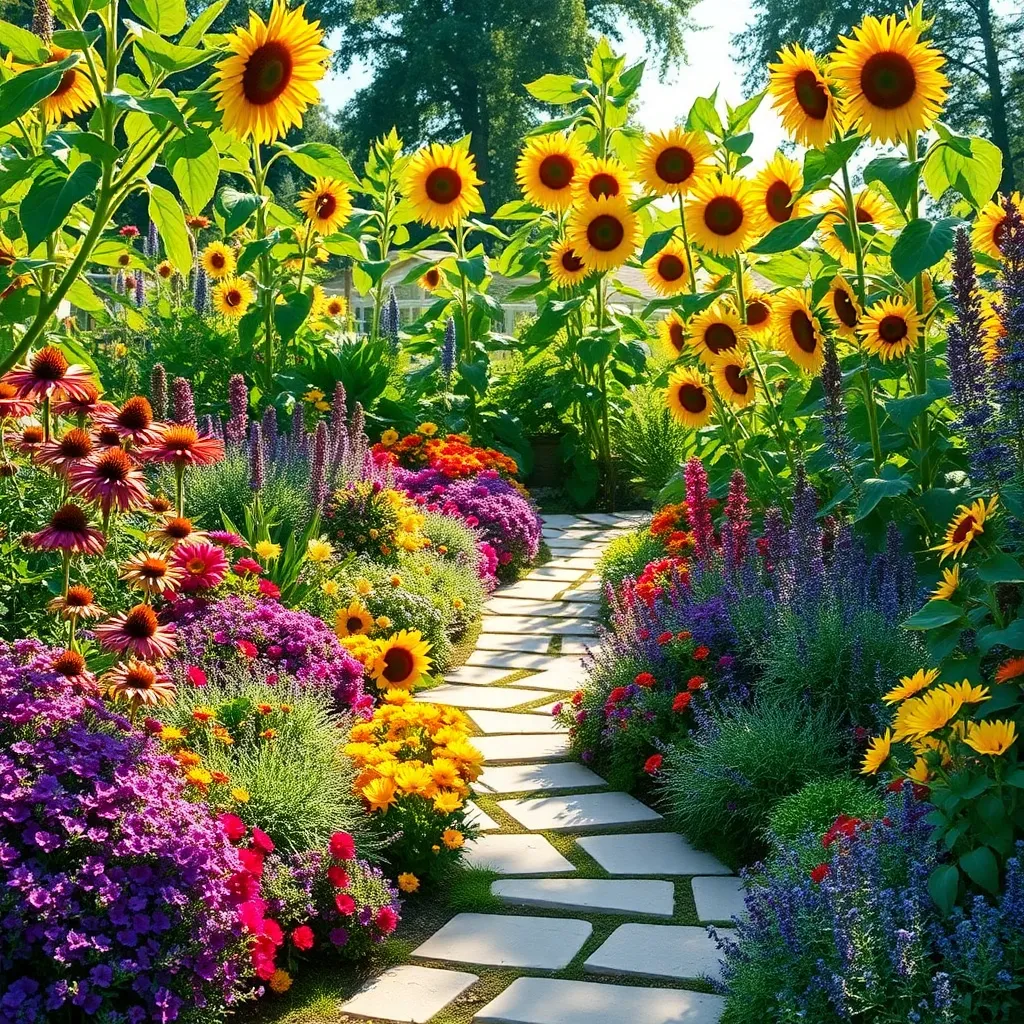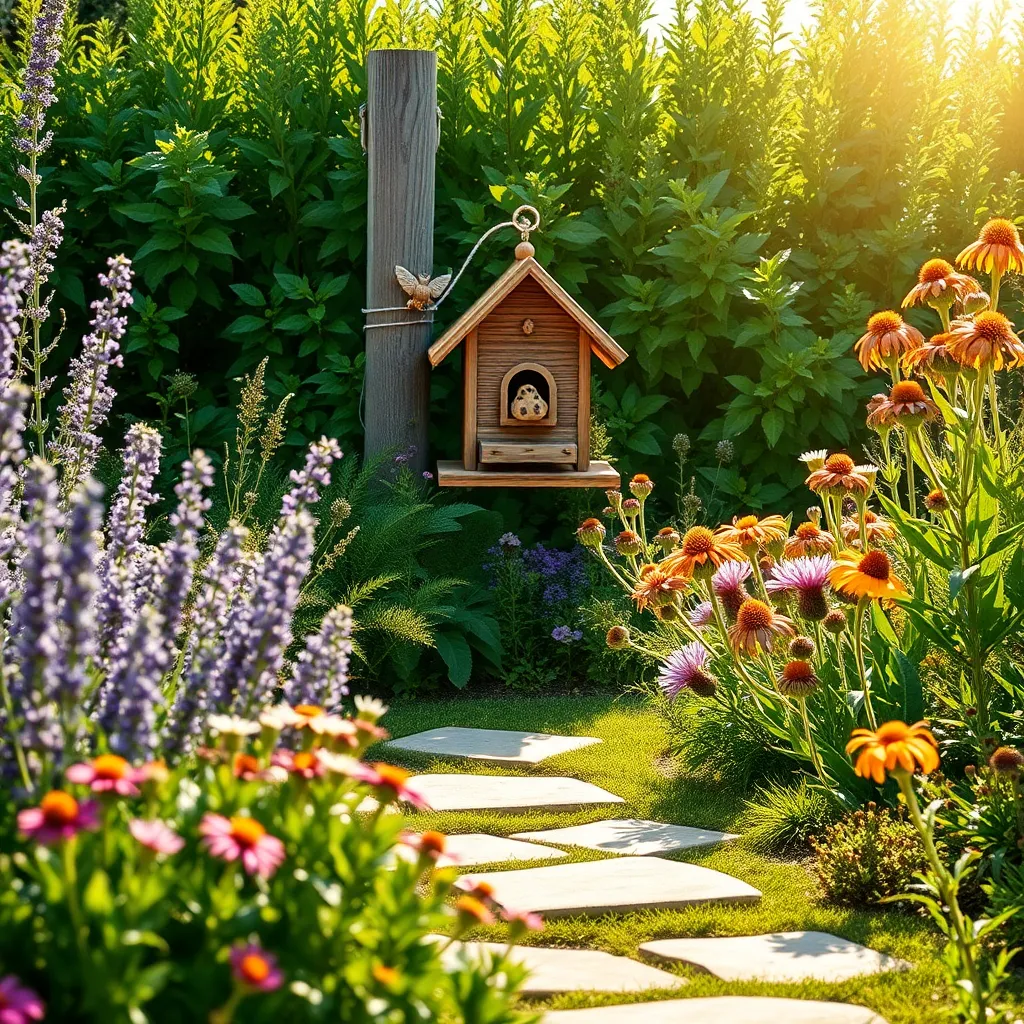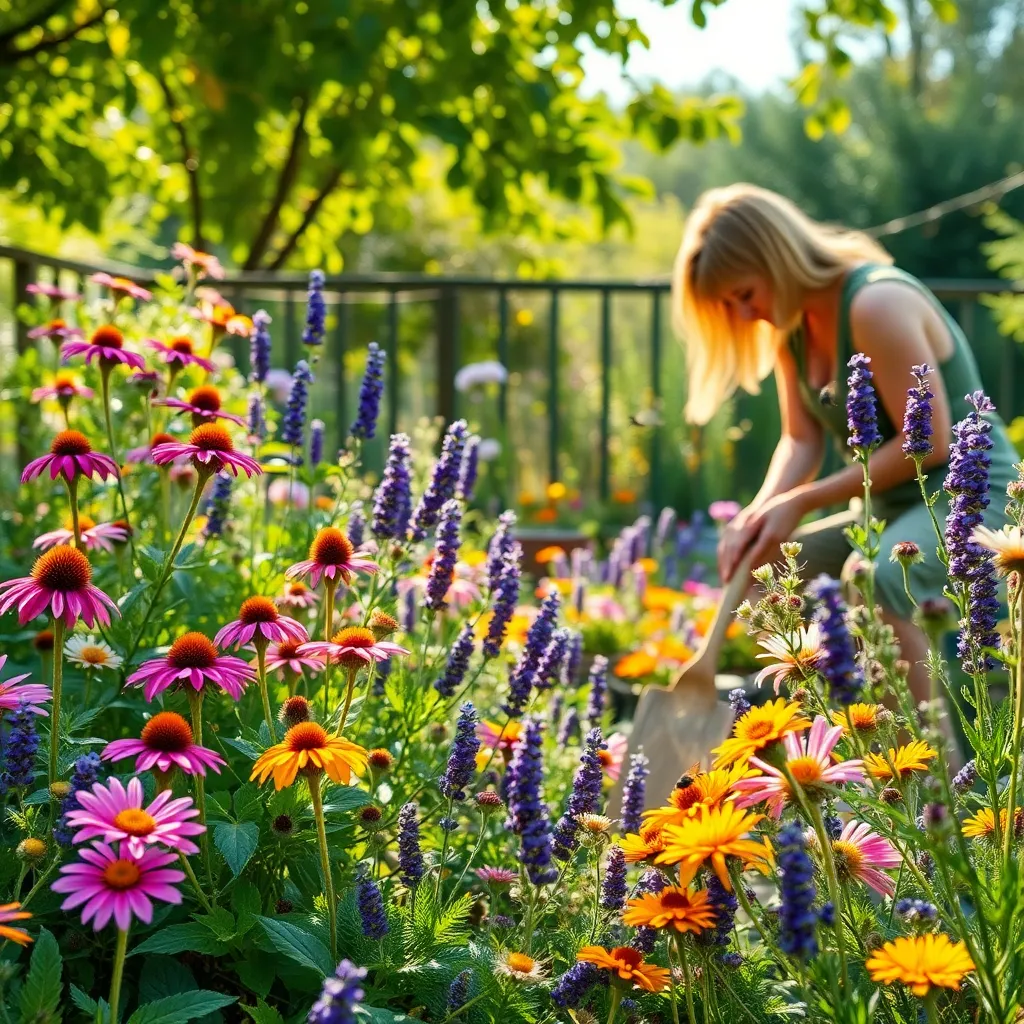Creating a pollinator-friendly garden is a delightful venture that benefits not only your green space but also the environment at large. Whether you’re just dipping your toes into the gardening world or have years of experience under your belt, welcoming pollinators like bees, butterflies, and hummingbirds into your garden can transform your outdoor sanctuary into a vibrant, bustling ecosystem. These tiny creatures are essential allies, playing a crucial role in the reproduction of plants, and by extension, the health of our planet. As you embark on this journey, you’ll discover the joy of cultivating a haven that supports nature’s industrious workers.
For those new to gardening, designing a pollinator-friendly space can seem daunting, but it’s wonderfully achievable with a little guidance and passion. This article will provide you with the essential steps to create a thriving habitat, from selecting the right plants to understanding the needs of different pollinator species. Experienced gardeners, too, will find fresh insights and inspiration to enhance their existing gardens, ensuring they meet the ever-evolving needs of pollinators. Together, we’ll explore plant selection, placement, and maintenance strategies that ensure your garden becomes a welcoming refuge for these vital creatures.
You’ll learn about the importance of biodiversity and how to choose native plants that offer the best nourishment. We’ll delve into the importance of providing water sources and safe nesting spots, ensuring that your garden offers a full spectrum of resources. By the end of this article, you’ll be equipped with practical tips and creative ideas to cultivate a garden that not only flourishes with beauty but also hums with the life-sustaining activities of pollinators. Whether you’re enriching a small balcony or a sprawling yard, your efforts will make a significant impact, nurturing both your soul and the world around you.
Select Native Plant Species

Choosing native plant species is crucial for creating a thriving pollinator-friendly garden. Native plants are adapted to local climates and soil conditions, making them easier to grow and maintain with fewer resources.
Begin by researching the native plant species in your area and consider their bloom times to ensure a continuous food supply for pollinators. Incorporate a mix of early, mid, and late-season bloomers to provide nectar and pollen throughout the growing season.
When selecting plants, focus on a variety of shapes and colors to attract different pollinators. For example, tubular flowers may appeal to hummingbirds, while flat, open blooms attract butterflies and bees.
Consider the soil type in your garden before planting. Many native plants thrive in well-drained soil, and you can improve drainage by adding organic matter like compost.
Water your plants thoroughly after planting and mulch around the base to retain moisture and suppress weeds. Once established, native plants often require less water and care, making them a sustainable choice for your garden.
Plan a Diverse Layout

Creating a diverse garden layout starts with a thoughtful balance of plant heights, colors, and bloom times. This not only enhances visual appeal but also ensures your garden provides a continuous supply of nectar and pollen for pollinators throughout the growing season.
Consider layering plants by height, with taller species like sunflowers or hollyhocks at the back and shorter groundcovers such as creeping thyme at the front. This approach allows all plants to receive adequate sunlight and creates a natural, tiered effect that is both functional and beautiful.
Incorporate a variety of flower shapes and sizes to attract different types of pollinators. For example, tubular flowers like penstemon attract hummingbirds, while flat, open blooms such as asters are perfect for butterflies.
Use a mix of annuals and perennials to achieve a dynamic and resilient garden. While perennials provide a reliable backbone to your garden, annuals can be easily swapped each year to introduce new colors and textures, keeping the landscape fresh and inviting.
- Tip for Beginners: Start with easy-to-grow plants like echinacea or black-eyed Susans, which thrive in a variety of soil types and require minimal care.
- Advanced Tip: Experiment with companion planting by pairing plants like lavender and sage, which can enhance each other’s growth and attract a wider range of pollinators.
Regular maintenance is key to sustaining a healthy, diverse garden. Ensure plants are watered deeply but infrequently, allowing the soil to dry between waterings to encourage deep root growth and prevent disease.
Overall, a well-planned garden layout that embraces diversity will not only attract and support pollinators but also create a vibrant and lively outdoor space for you to enjoy. By following these practical guidelines, you can transform your garden into a thriving, pollinator-friendly habitat.
Provide Water Sources

Providing water sources in your pollinator-friendly garden is essential for attracting and supporting a variety of beneficial insects. These creatures, such as bees and butterflies, need consistent access to water for hydration and to help regulate their body temperature.
Consider adding a simple birdbath or shallow dish filled with water to your garden. Place some stones or marbles in the water to give insects a place to land and drink without the risk of drowning.
Keep the water fresh and clean by changing it every few days to prevent stagnation and mosquito breeding. If you’re in a dry climate, this becomes even more crucial, as natural water sources may be scarce.
For a more advanced setup, you might incorporate a small pond or water feature that continuously circulates water. This not only provides a constant water source but also adds a soothing element to your garden’s ambiance, encouraging more pollinators to visit.
Incorporate Shelter Options

Incorporating shelter options into your pollinator-friendly garden is essential for providing a safe haven for insects. Choose a mix of plant varieties, such as shrubs and trees, to create different layers of protection and nesting sites.
For beginners, consider planting dense shrubs like lilacs or butterfly bushes, which offer excellent cover and attract pollinators. These plants thrive in well-drained soil and need regular watering during dry spells to maintain their health and structure.
Advanced gardeners can explore creating small piles of rocks or logs to serve as nesting sites for solitary bees. Ensure these shelters are placed in a sunny location and are protected from strong winds to maximize their effectiveness.
Additionally, integrating climbing plants like honeysuckle or clematis can provide vertical shelter, adding another layer of habitat for pollinators. These climbers prefer a slightly acidic to neutral soil and benefit from a trellis or support structure to grow effectively.
Avoid Harmful Pesticides

Creating a pollinator-friendly garden means ensuring the environment is safe for bees, butterflies, and other beneficial insects. Avoiding harmful pesticides is crucial, as many chemical solutions can deter or even harm these essential creatures. Instead, explore natural alternatives to manage pests. Neem oil is a popular choice, as it effectively controls pests while being gentle on pollinators.
Consider introducing beneficial insects to help control pest populations naturally. Ladybugs and lacewings are excellent for managing aphids without resorting to chemicals. Encourage a balanced ecosystem by planting a variety of flowers and herbs that attract these helpful insects. This will support the natural food web in your garden, reducing the need for harmful interventions.
For a more advanced approach, practice companion planting to naturally deter pests. Certain plants, like marigolds, can repel nematodes and other harmful insects when planted near vegetables. Interplanting different species can confuse pests and reduce infestations. This method not only protects your plants but also fosters a diverse habitat that supports pollinators.
Regularly inspect your plants for signs of pest damage to catch issues early. Handpicking pests or using a strong spray of water can often solve minor infestations without chemicals. Keep your garden healthy and thriving by maintaining proper watering and soil conditions, as stressed plants are more susceptible to pests. With these practices, your garden will become a haven for pollinators and a model of natural pest control.
Conclusion: Growing Success with These Plants
Creating a pollinator-friendly garden is not just an endeavor for nature lovers; it’s a beautiful reflection of the nurturing relationships we cultivate with our environment. Throughout this article, we’ve explored five key concepts: understanding the needs of different pollinators, selecting native plants, providing essential habitats, reducing pesticide use, and fostering a continuous bloom cycle. Each of these steps mirrors the care and attention required in our personal relationships.
As an actionable next step, consider planting a small section of your garden with native wildflowers that attract pollinators. This simple act can create immediate positive change, much like small gestures that strengthen our interpersonal bonds. Remember, nurturing relationships with nature and loved ones takes time and intention.
As you embark on this journey, bookmark this article to revisit these insights and strategies whenever you need a refresher. Sharing these principles can inspire others to foster their own pollinator-friendly spaces, expanding the web of care and connection.
Looking ahead, remember that the seeds of today’s efforts will bloom into tomorrow’s thriving relationships. Let this garden be a metaphor for the love and connection you cultivate in all areas of your life. Together, we can build a more harmonious world, one relationship at a time.
